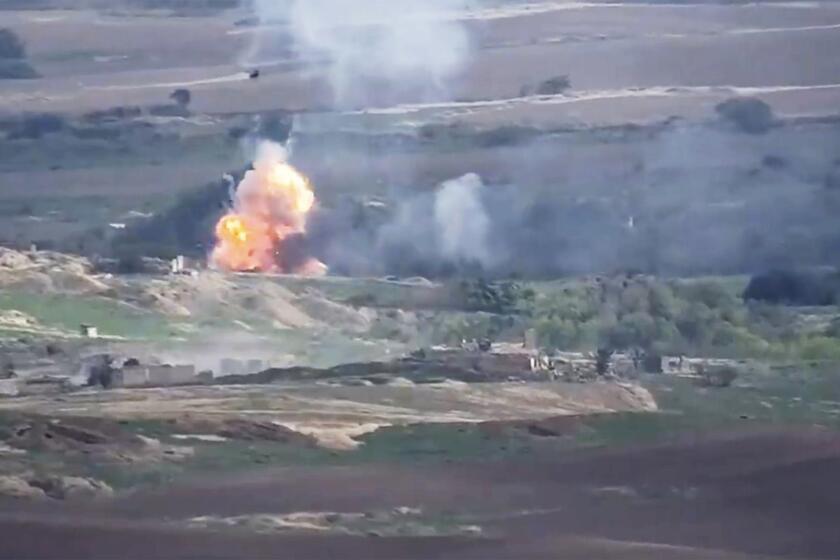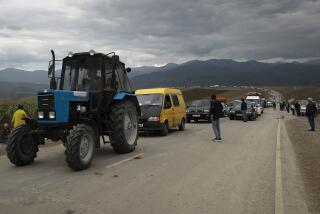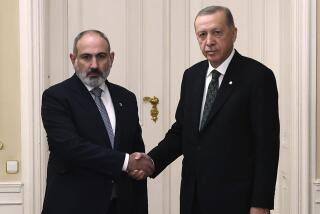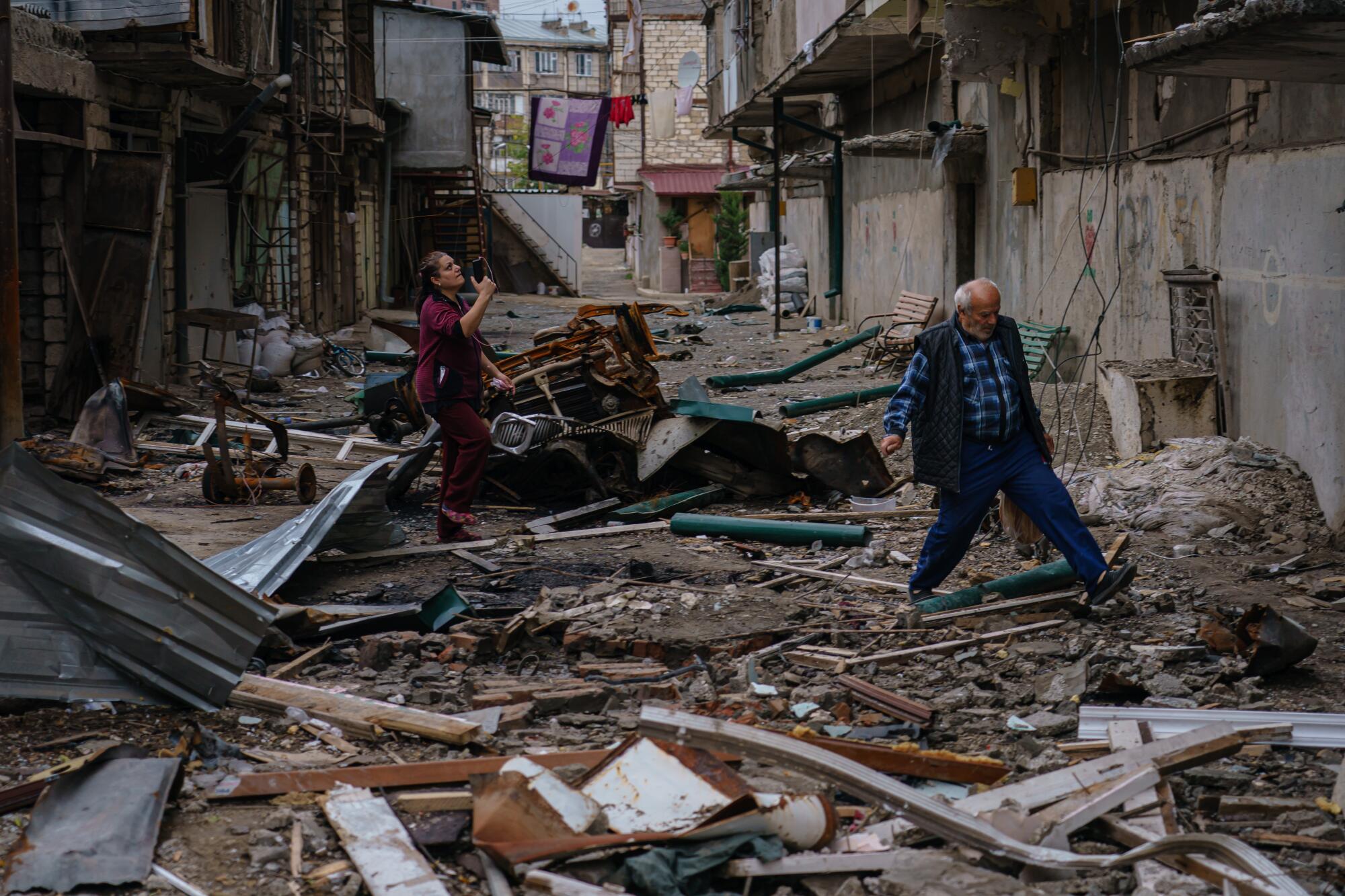
STEPANAKERT, Azerbaijan â The sirens silent for the time being, Vartan Abrahamian, a 53-year-old social worker and retired soldier, returned to seal the broken windows on his home in the capital of Nagorno-Karabakh.
âWeâre used to it. For myself Iâm not worried,â Abrahamian said of the hostilities raging once more in this disputed territory, a mountainous region tucked between Armenia and Azerbaijan. It lies at the heart of a seething, decades-long fight that began during the chaotic breakup of the Soviet Union and that flared up again almost two weeks ago.
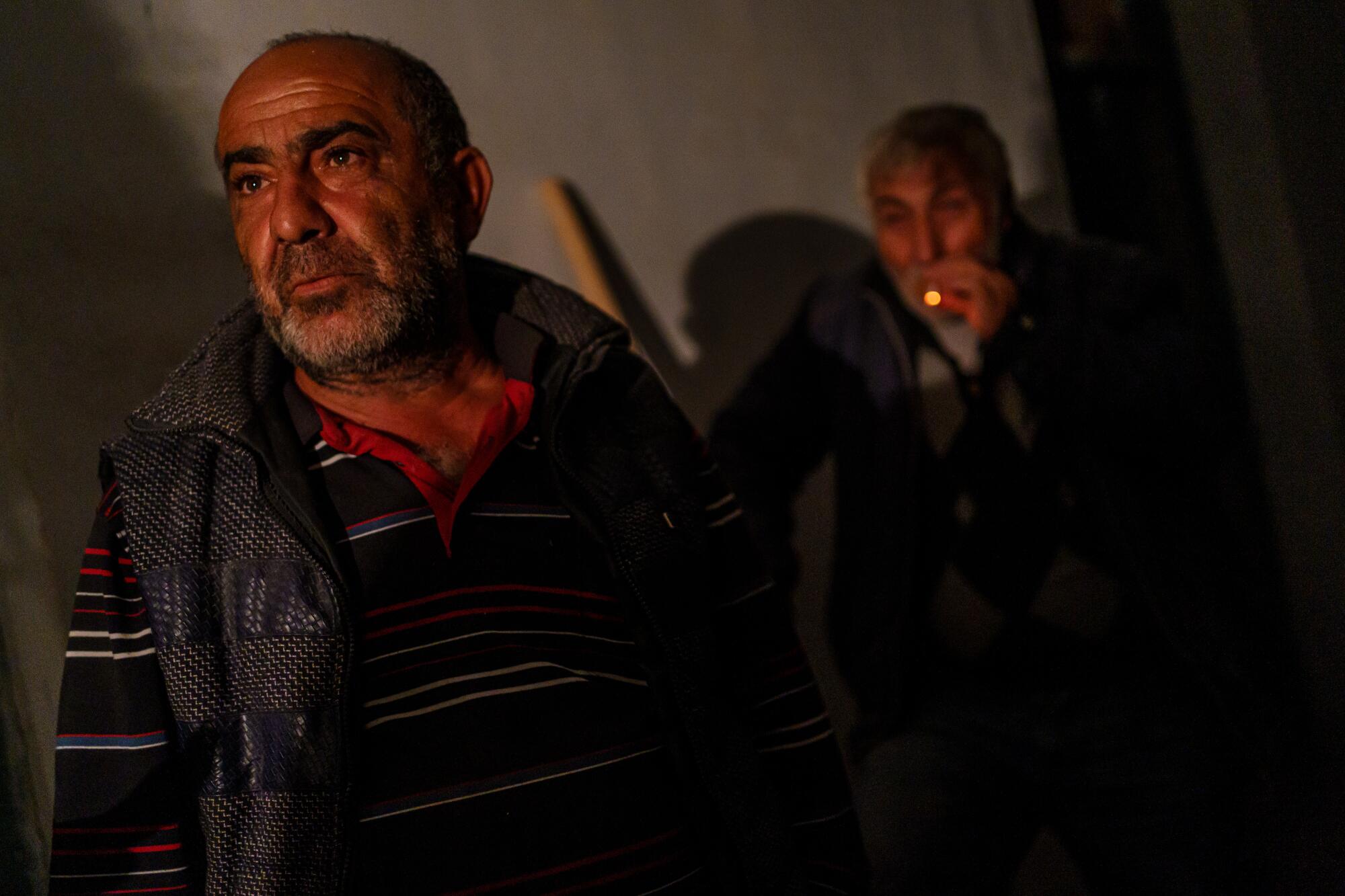
Abrahamian, one of the about 150,000 ethnic Armenians who claim the enclave as their own â itâs recognized internationally as part of Azerbaijan â had fought in an earlier iteration of the conflict; now his two sons were at the front line, continuing a generational war that inflects so much of life in this onetime Soviet splinter enclave.
âItâs our destiny. Itâs our duty. ⌠We will never leave Artsakh,â Abrahamian said, employing the traditional Armenian name for Nagorno-Karabakh.
As Armenia-Azerbaijan fighting intensifies over separatist region, wider rivalries could come into play
To walk the streets of Stepanakert is to experience the legacy of that fight, a conflict that has often been described as âfrozen,â although âsmolderingâ is perhaps more accurate: Flower-lined boulevards lead to elegant cafes but also army surplus stores. A decommissioned tank, a trophy from the 1994 war, keeps a vigil at the entrance to the city. Posters with the stern faces of those fallen adorn the hallways of a school. In one classroom, eighth-graders compete over how fast they can assemble and disassemble a Kalashnikov rifle.
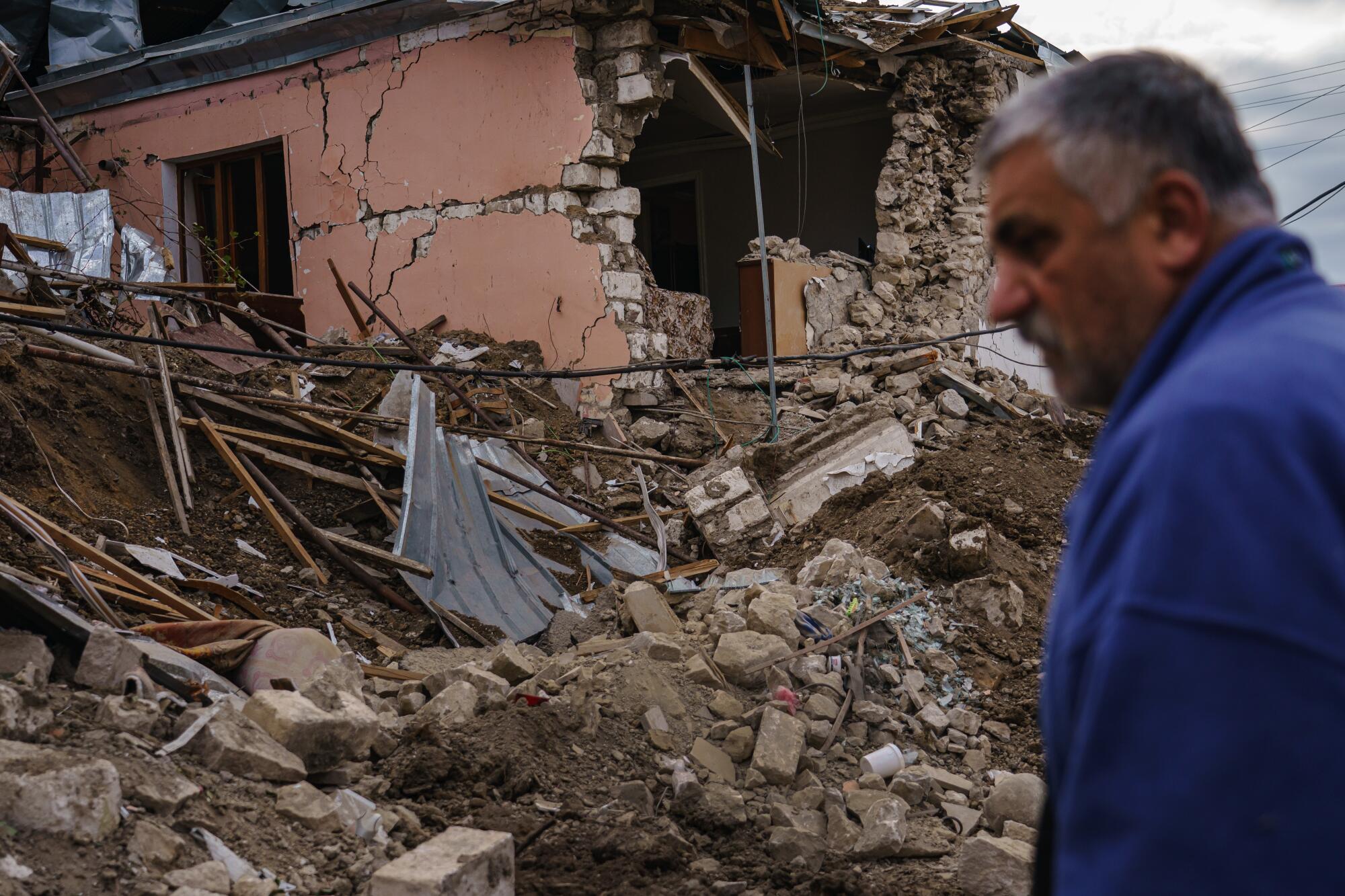
âTwenty-one seconds,â boasted David Safaryan, 63, a decorated, now retired artillery officer when asked about his best time. âBut you shouldnât disassemble a Kalashnikov. You should shoot it.â
Safaryan, a neighbor of Abrahamian whose house suffered light damage in recent days from a bomb falling on a neighborhood flower shop, also has two of his sons as well as two sons-in-law in combat.
The warfare, which began in 1991, saw 30,000 people killed before sputtering to an uneasy cease-fire in 1994. At that point, Armenians were in control of not only Nagorno-Karabakh but also a swath of territory surrounding it, even as more than a million people â including more than 600,000 Azerbaijanis and 300,000 Armenians, according to the figures from the United Nationsâ refugee agency â were forced to leave their homes.
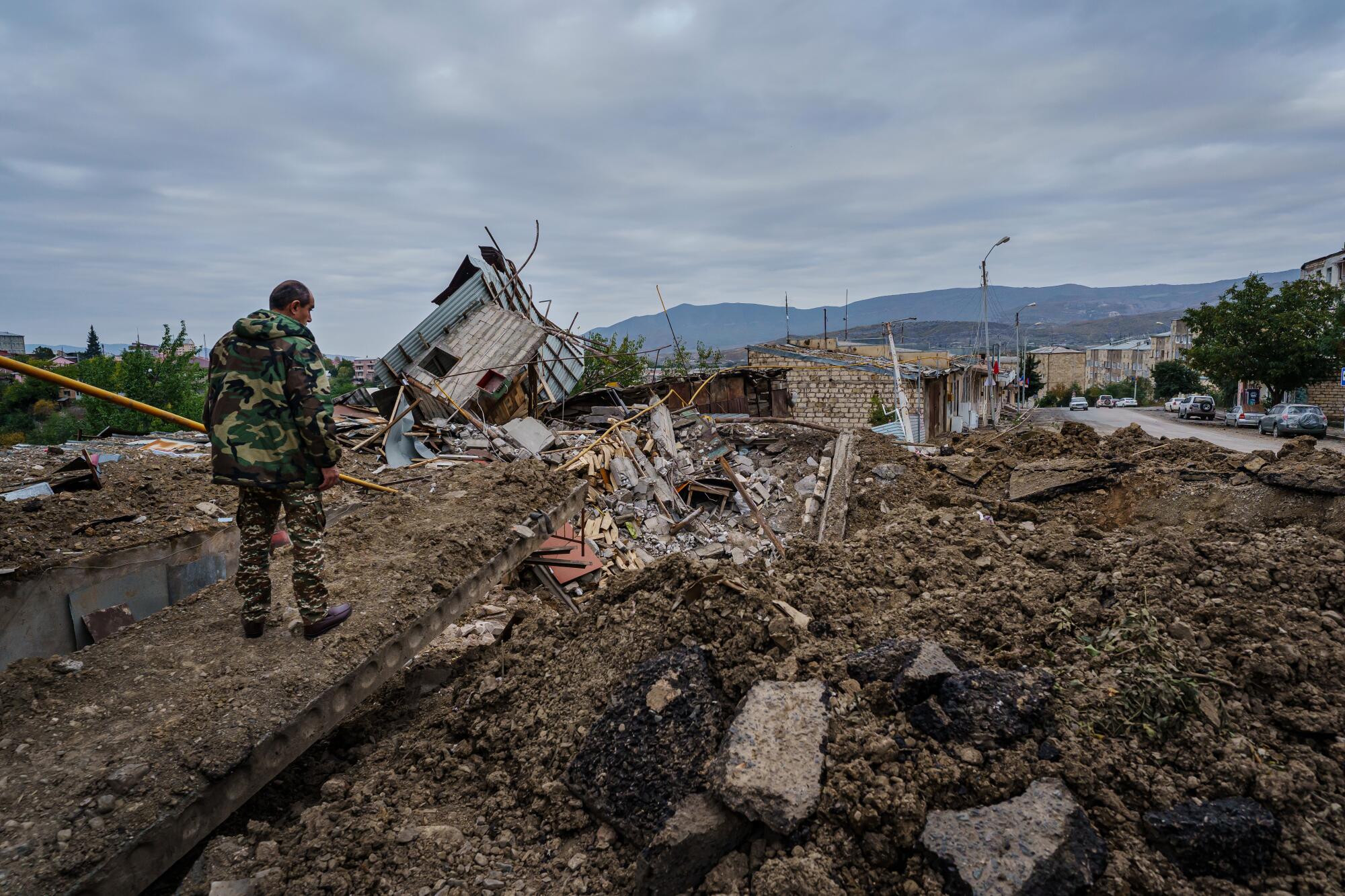
Since then, world powers involved, including France, Russia and the United States, have failed in efforts to push negotiations forward, while the conflict settled into a steady rhythm of skirmishes followed by impermanent cease-fires.
The clashes are different this time around.
Azerbaijan, backed by muscular support from its longtime ethnic ally in Turkey, has deployed Turkish armed drones, even as it has used its cache of petrodollars to spend billions on armaments from Israel and Russia. (Russia also sells weapons to Armenia, though at a discount.)
Turkey is also reported to have deployed hundreds of Syrian rebels to the front lines in Nagorno-Karabakh, according to the Syrian Observatory for Human Rights, a watchdog group covering events in Syria. Turkey denies dispatching fighters.
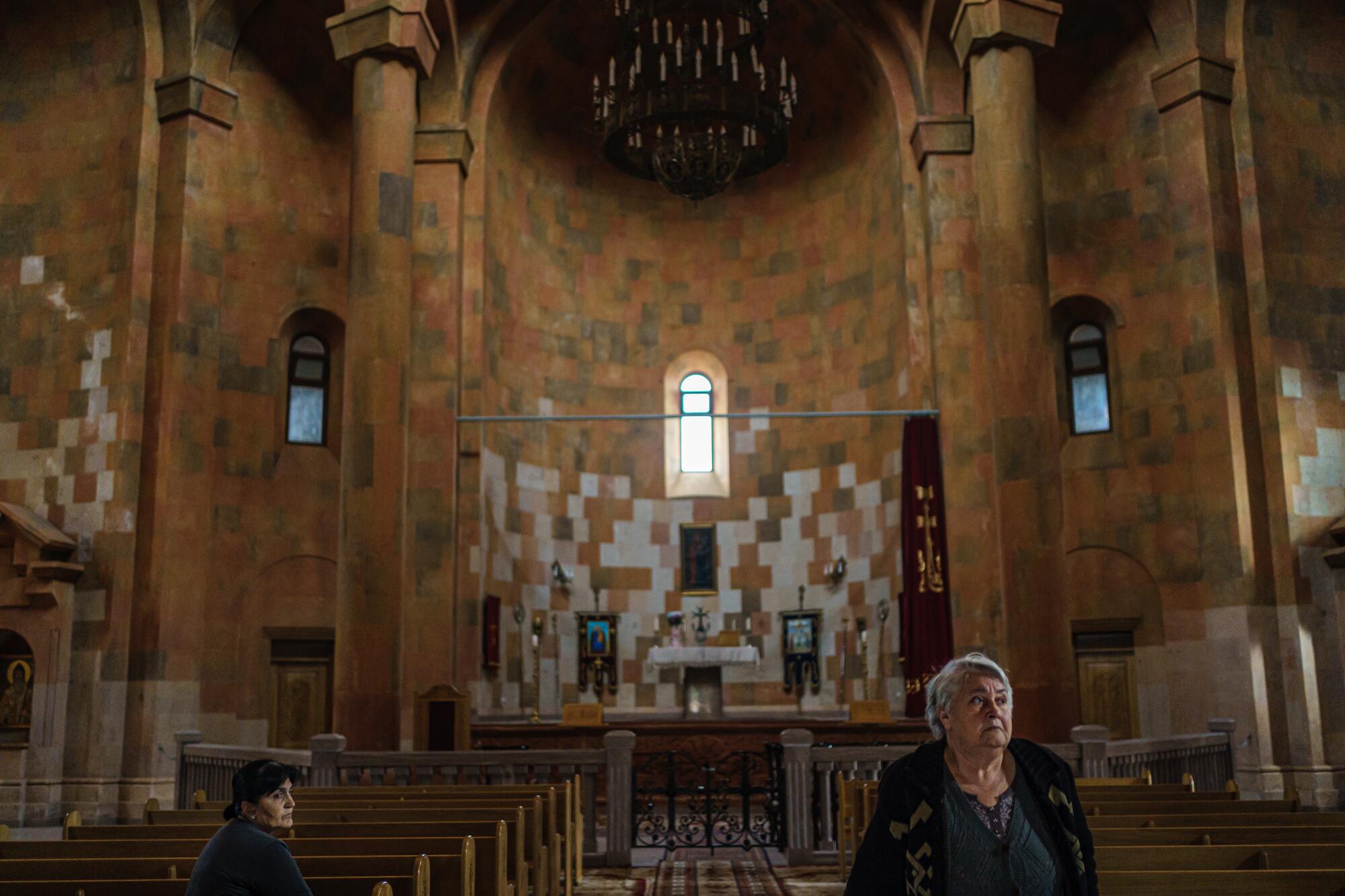
Turkeyâs intervention, meanwhile, has spurred remembrance of the Ottoman Empire â precursor to the modern Turkish republic â and its killing of an estimated 1.5 million Armenians beginning in 1915, a slaughter widely considered a genocide, except by Turkey.
The upgraded materiel has given Azerbaijan greater reach, allowing it to strike areas well away from the front line. In recent days, Nagorno-Karabakhâs cities and towns have been subjected to hourlong bouts of shelling.
Population centers have also been hit on the Azerbaijani side, including Ganja, Azerbaijanâs second largest city, according to government officials, who said Armenia had targeted residential areas as well as civilian infrastructure. Since the fighting began Sept. 27, 404 of Nagorno-Karabakhâs fighters have been killed, according to its military. Azerbaijan does not give figures on military losses. Dozens of civilians have been wounded and injured on both sides.
The onslaught on Stepanakert has been especially intense.
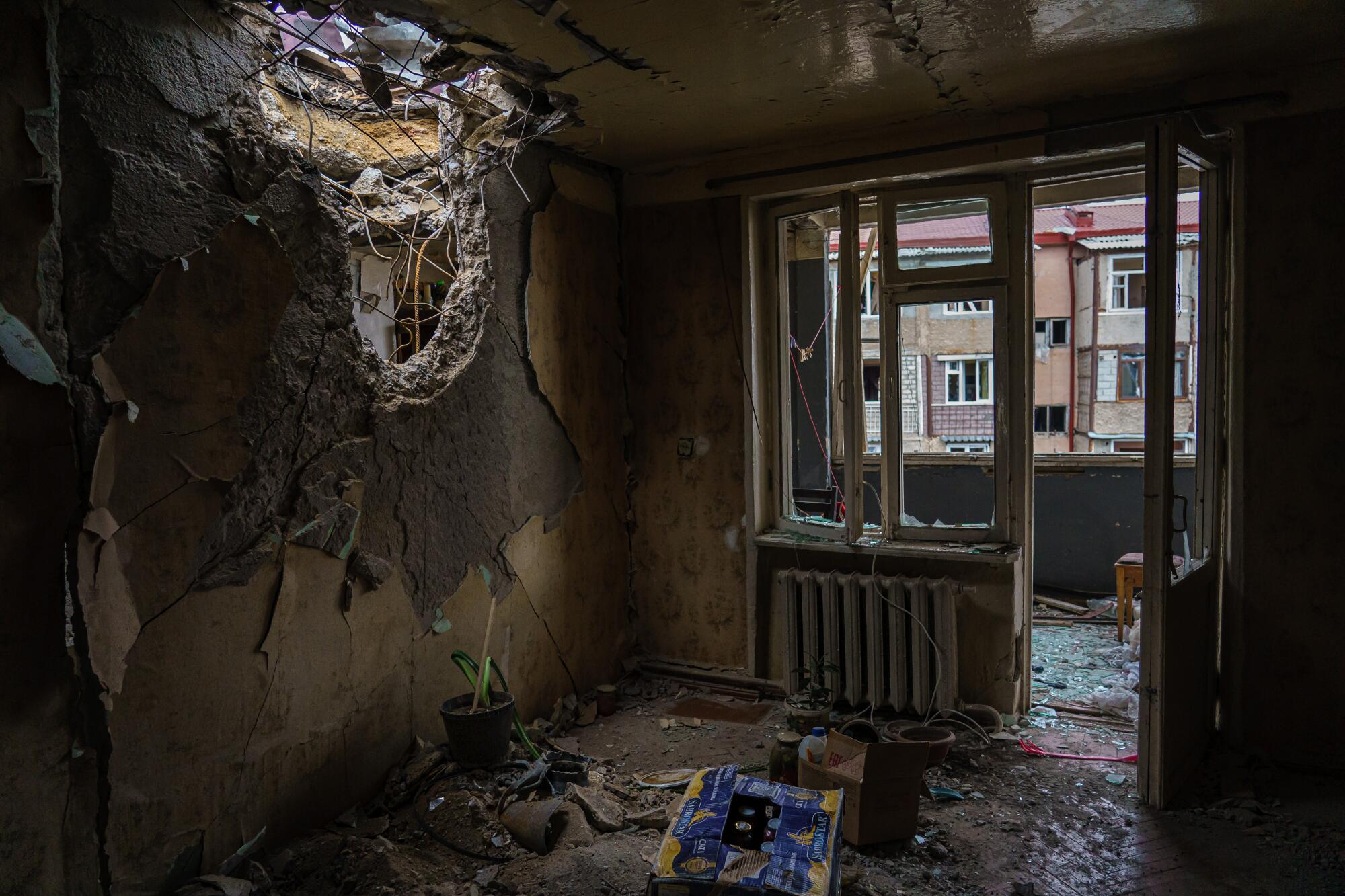
On Friday, a few hours of relative quiet saw Haik, a 36-year-old uniformed communications expert from Yerevan, go with his team to the site of a large antenna tower that had been peppered with shrapnel.
âFor us thereâs no difference between Azerbaijan and Turkey. [Turkish President Recep Tayyip] Erdogan says itâs one nationality, two countries,â Haik said. He refused to give his last name for security reasons.
âBut the war is different this time: Now there is no human contact. Itâs only artillery. Itâs only shelling.â
His words were interrupted by the thud of shells landing nearby, sending a group of journalists and Haikâs team scurrying down the stairs of an old post office building. There, a crew of six repairmen were clearing debris from corridors and stringing up lights to prepare the area as a shelter.
âWeâre used to this. Weâve already seen three wars. Now our kids see war too,â said Hamayak Vanyan, 60.
âMy son is now fighting too,â said Vanyanâs colleague, a 70-year-old man who gave only his nickname, Milord. Though he was born in Azerbaijanâs capital, Baku, and once had had many Azerbaijani friends, he now sees little chance for peace.
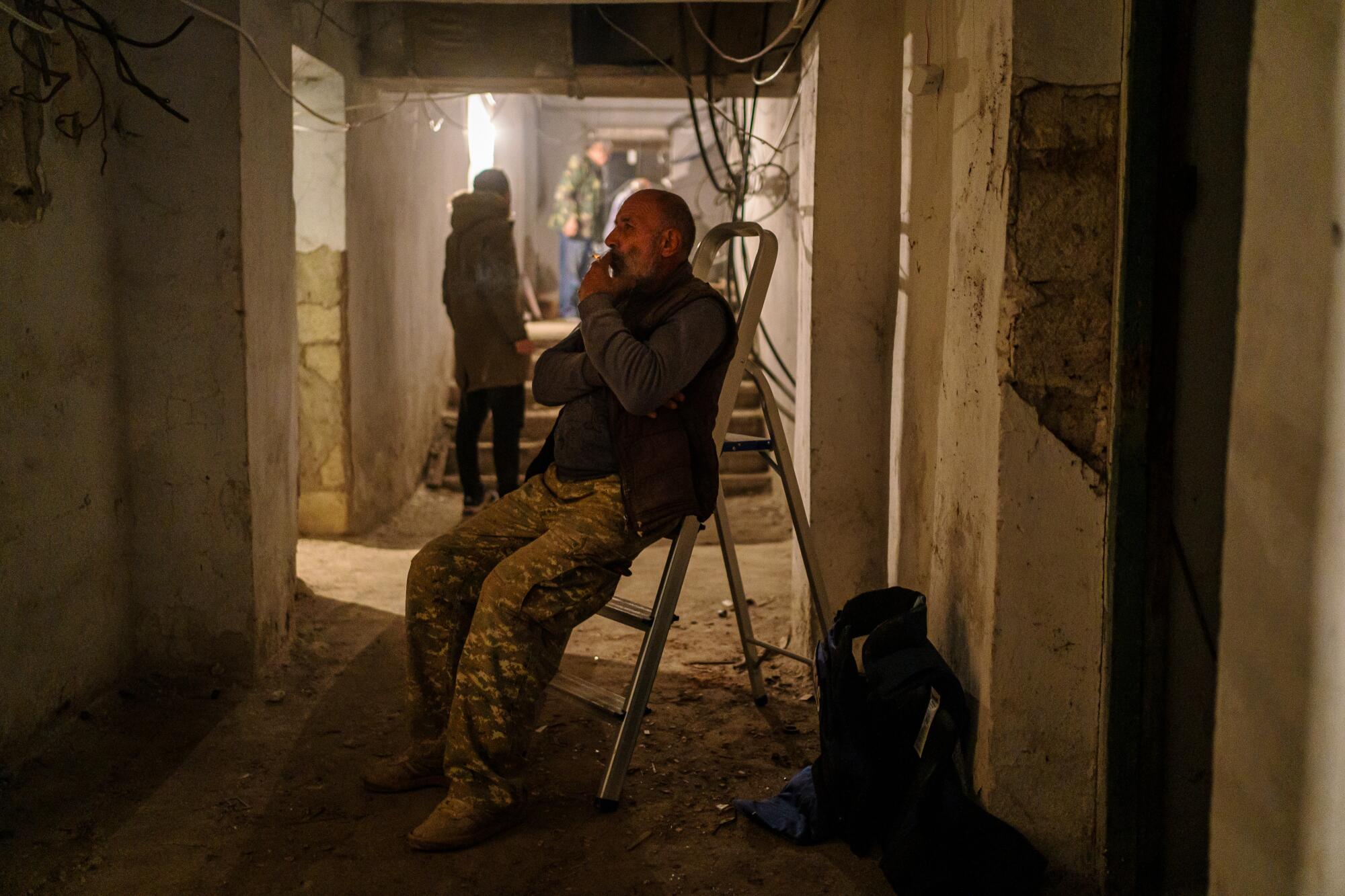
âEvery moment since 1988 Iâm ready to fight. We canât live together with Azeris more. Maybe we can live in peace, but there will be no communication between us,â he said, before listing the names of sites where Armenians had faced pogroms at the hands of Azerbaijanis over the years. âThereâs too much history already. You canât change that.â
That history has also hampered repeated attempts at a cease-fire.
Early Saturday, after 11 hours of difficult mediation by Russian Foreign Minister Sergei Lavrov along with his Azerbaijani and Armenian counterparts, he announced a humanitarian truce that would allow the exchange of prisoners and corpses.
The truce was supposed to have taken effect at noon, but the wail of air-raid sirens continued to flood Stepanakert.
Armenian Defense Ministry spokeswoman Shushan Stepanyan said Azerbaijani forces had launched an offensive into Nagorno-Karabakh five minutes after the cease-fire was to begin. Azerbaijani authorities accused Armenian forces of bombarding several Azerbaijani regions.
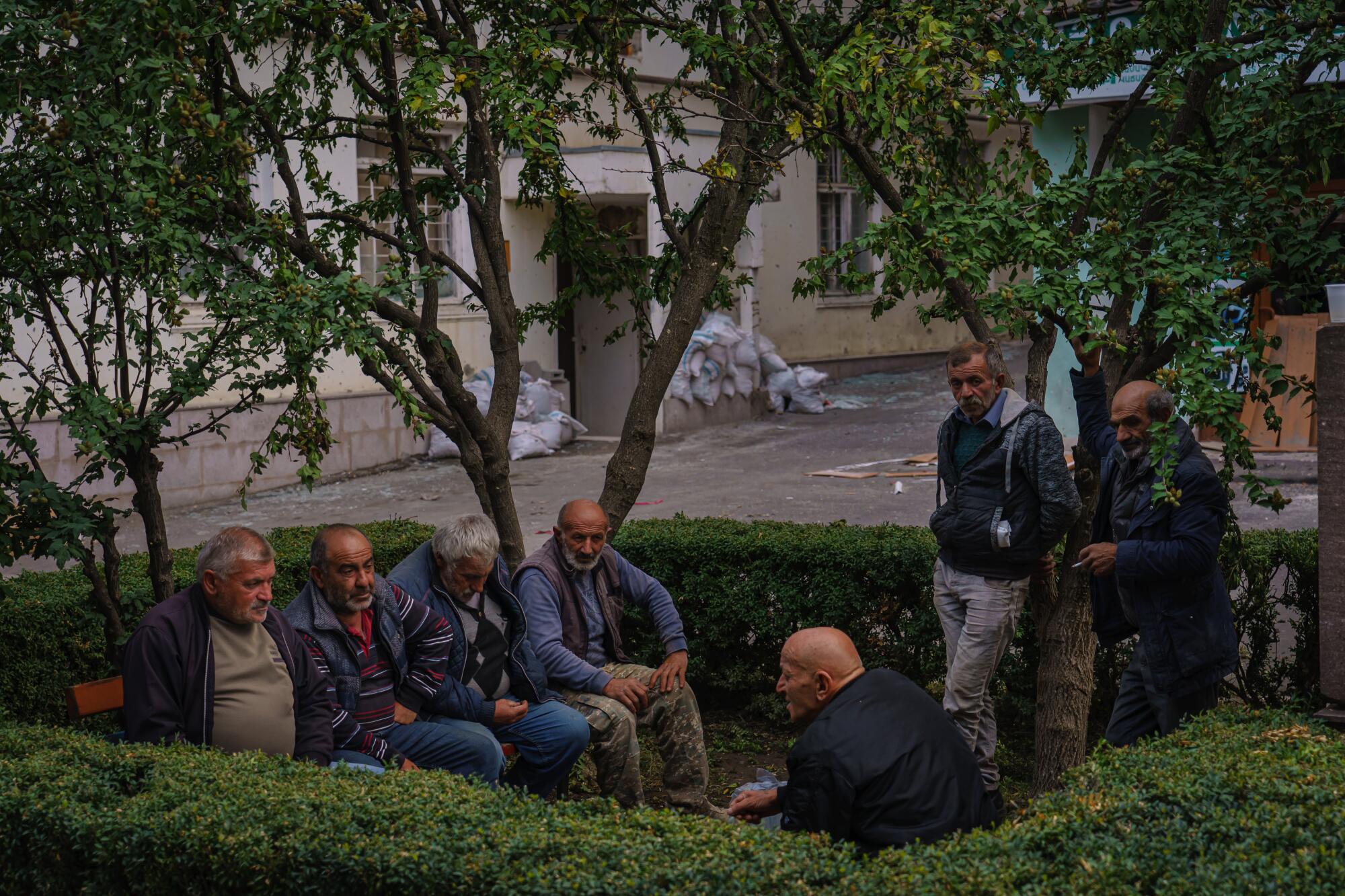
âWhere is the cease-fire? The war is going on. They didnât want to stop it. And because of that we donât trust Azeris,â said Archbishop Pargev Martyrosyan, the white-haired primate of the Diocese of Artsakh of the Armenian Apostolic Church.
In an interview in his office beside the Holy Mother of God Cathedral, a rose-colored structure overlooking a mountainous view, he spoke of the beauty of the area and how the conflict had stunted its development.
âOur people are suffering. Itâs been abnormal for years. But itâs a beautiful country. After the war, many people will come,â he said.
A thud interrupted his sentence.âA bomb. Letâs go,â he said, walking quickly to the cathedralâs basement.
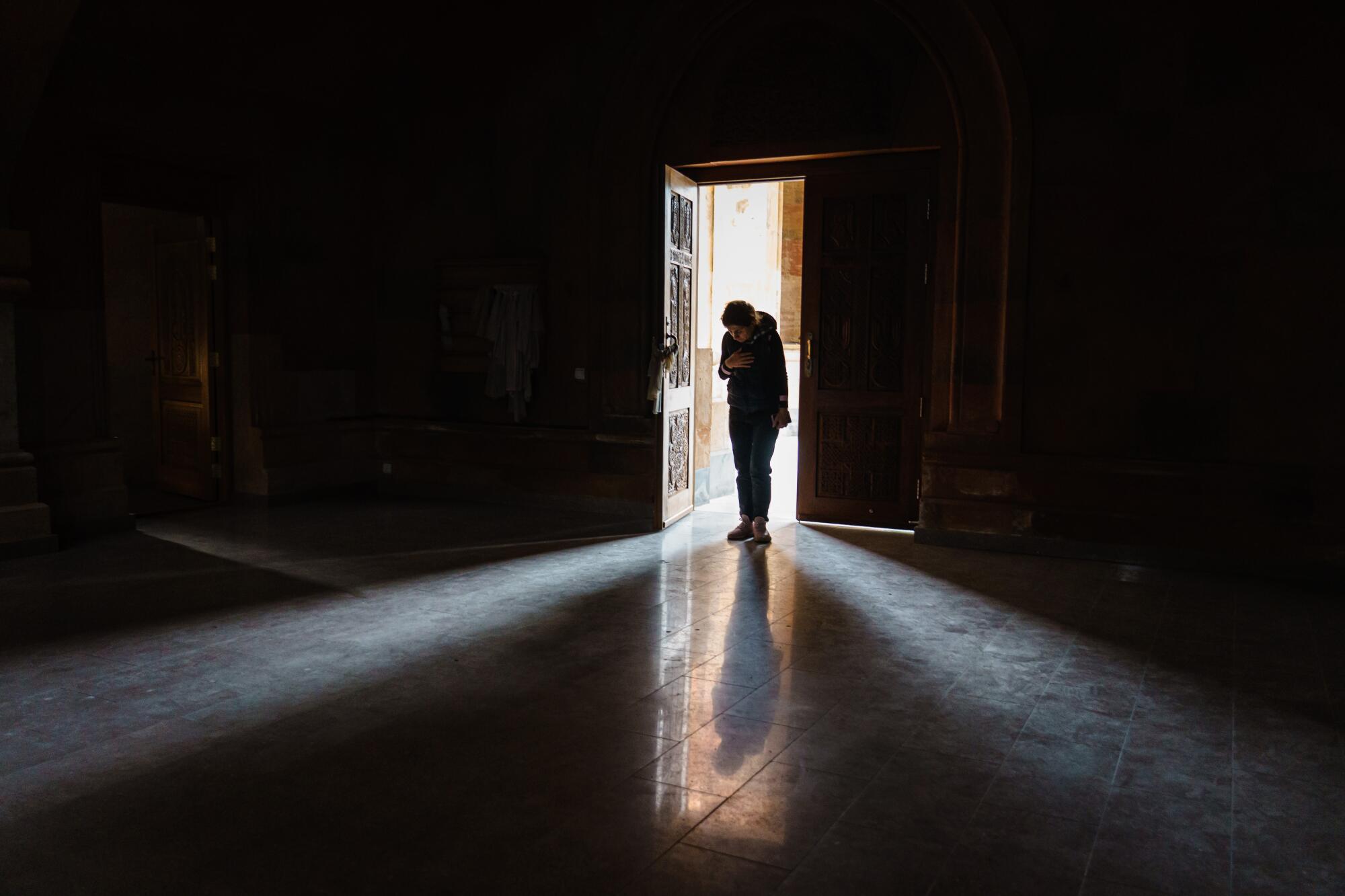
More to Read
Sign up for Essential California
The most important California stories and recommendations in your inbox every morning.
You may occasionally receive promotional content from the Los Angeles Times.
